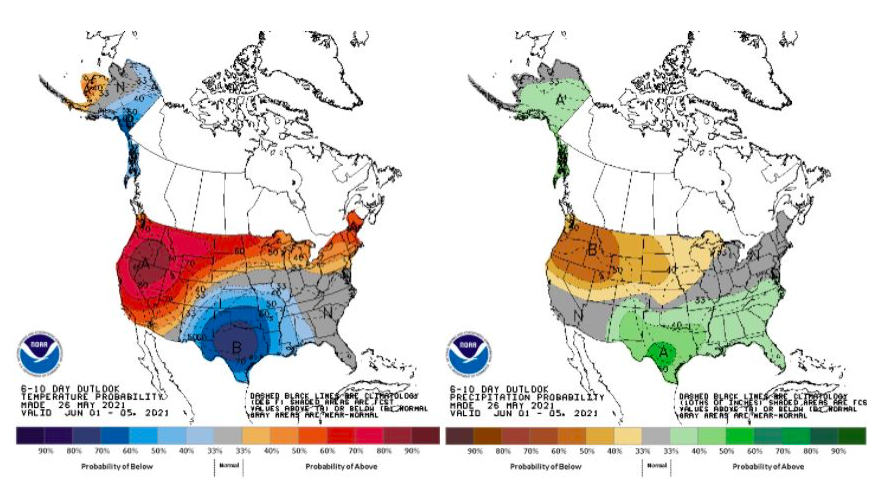Excessive Rains Could Dampen Harvest Outlook in Winter Wheat Belt
Weather Extremes 060121
The final days of May were soggy and cold for areas of the Plains, which was a sudden switch from the dryness headlining the weather year so far.
“We have seen a little bit of a change in pattern during the second half of May,” says Brad Rippey, USDA meteorologist. “The biggest change has been across the Great Plains, and especially the Northern Plains. We've seen some desperately needed moisture in Montana and the Dakotas. But it looks like that's a short-term relief because as we look into early June, it does appear that a warmer and drier weather pattern should return so that may try to cap the relief a little bit.”

NOAA’s June outlook also indicating the relief will be short lived. And with the dryness so severe, it won’t be enough to remedy the drought from the Northern Plains to West Texas, an region where some farmers saw as much as 3 inches of rain this past weekend.
“Pretty much the same thing for West Texas,” says Rippey. If you think of cotton country, the western tier of Texas, a lot of those areas have been in D3 and D4 going all the way back to late last year. And it is going to take some time, especially on the pasture and range land recovery.”
While some areas have been fortunate to see needed moisture, out West the rains remain absent, a trend Rippey sees lasting until at least the end of this year.
“There's really no opportunity for relief until we get into the tail end of 2021,” says Rippey. “We have to get through the summer, and the fall on what we've got in the reservoirs and in the soil moisture. Andit's a bad bad situation.”
While some areas of the country can’t catch a rain, the moisture won’t shut off for some. This map shows rain over the past 30 days shows the portions of the plains and south getting pummeled with rain, which could hinder the start of wheat harvest.
“For the Central and Southern Great Plains and into the lower Midwest, we're getting into a time of year where we'd like to see - from a winter wheat standpoint - things dry out,” says RIppey.
Instead, storms over the weekend were forecast to drop another two to six inches of rain across the Central and Southern Plains, which Rippey says is too much moisture for a maturing wheat crop.
“You have to consider that these folks that have been hit so hard by weather extremes across the Central and Southern Great Plains, are all of a sudden dealing with another one. And that's too much water at maturation and early harvest time across the Winter Wheat Belt.”
USDA's Crop Progress report released Tuesday shows 79% of the winter wheat crop is headed in the U.S., one percentage points ahead of last year. Texas, Oklahoma and California all sit at 100% headed.







